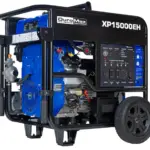When it comes to choosing an RV, there are many options to consider. Two of the most popular types are Class A and Class C RVs.
While both offer unique advantages, there are several reasons why someone might choose a Class C RV over a Class A.
One of the main reasons someone might choose a Class C RV is the cost. Class A RVs can be quite expensive, with some models costing over $2 million.
In contrast, Class C RVs are generally more affordable, making them a great choice for those on a budget. Additionally, Class C RVs tend to be more fuel-efficient than Class A RVs, which can save owners money over time.
Another advantage of Class C RVs is their size. Class C RVs are typically smaller than Class A RVs, which can make them easier to drive and park. They also tend to have better clearance, which can be important for those who plan to take their RV off-road or on rough terrain.
Additionally, Class C RVs often have more sleeping space than Class A RVs, which can be a plus for families or groups traveling together.
Cost

One of the biggest factors to consider when choosing between a Class C and a Class A RV is cost. Generally, Class C RVs are less expensive than Class A RVs. For example, a Class C RV will typically cost about $15,000 less than a similarly appointed Class A RV of the same length. This is one reason why Class C is the most popular type of RV for rentals.
Brand new Class C RVs tend to start at around $50,000 at the low end and can cost as much as $750,000 for the most luxurious styles. On the other hand, Class A RVs come with a base price of about $15,000 more than your average Class C, starting at around $65,000. However, it is important to note that prices can vary widely depending on the brand, model, and features.
In addition to the initial purchase price, it is also important to consider the ongoing costs of owning an RV. Class A RVs tend to have higher maintenance and repair costs due to their larger size and more complex systems. Insurance costs can also be higher for Class A RVs due to their higher value. Class C RVs, on the other hand, are generally less expensive to maintain and insure.
Overall, if cost is a major consideration, a Class C RV may be the better choice. However, it is important to weigh the initial purchase price against the ongoing costs of ownership to determine the best option for your budget and needs.
Maneuverability
One of the biggest advantages of a Class C RV over a Class A is its maneuverability. Class C RVs are built on a van or truck chassis, which makes them more compact and easier to handle on the road. This is especially important for those who are new to RVing or are not comfortable driving larger vehicles.
With a Class C RV, you can easily navigate through tight spaces, make sharp turns, and park in smaller campsites. This makes it ideal for those who like to explore off-the-beaten-path destinations or prefer to travel to more remote areas.
Another advantage of the Class C RV is its lower center of gravity. This means that it is less likely to tip over or roll if you over-correct on the steering wheel. This is especially important for those who are traveling with children or pets.
Furthermore, Class C RVs are equipped with airbags, just like a regular vehicle. This provides an added layer of safety in the event of an accident. The airbags can help to reduce the risk of injury to the driver and passengers.
Overall, the maneuverability of a Class C RV makes it a great choice for those who want to explore the open road without the stress and hassle of driving a larger vehicle.
Fuel Efficiency
When it comes to fuel efficiency, Class C RVs tend to have the upper hand over Class A models. This is due to a few key factors:
- Weight: Class A motorhomes are generally larger and heavier than Class C models. All that extra weight requires more power to get moving, which translates to lower fuel efficiency.
- Aerodynamics: Class A RVs have a flat front, which creates more wind resistance than the more streamlined front of a Class C RV. This increased resistance means more fuel is needed to maintain speed.
- Engine: Class C RVs often come with smaller, more fuel-efficient engines than Class A models. This, combined with their lighter weight and better aerodynamics, can result in significantly better fuel efficiency.
Of course, fuel efficiency can vary greatly depending on the specific make and model of RV. Class B RVs and camper vans tend to offer the best fuel economy, with some models achieving up to 25 miles per gallon. However, many Class C RVs also offer respectable fuel efficiency, with some models getting up to 10 miles per gallon.
Overall, if fuel efficiency is a top priority, a Class C RV may be the better choice. However, it’s important to keep in mind that other factors, such as living space and storage, should also be taken into consideration when choosing an RV.
Sleeping Accommodations
When it comes to sleeping arrangements, both Class A and Class C RVs offer a variety of options. However, there are some key differences to consider.
Class A RVs are typically larger and more spacious, which means they often have more sleeping options. Some Class A models have multiple bedrooms, bunk beds, and even pull-out sofas. This makes them a great choice for families or larger groups who need more space.
On the other hand, Class C RVs are more compact and usually have a single bedroom area located above the cab. While this may seem limiting, many Class C models can still sleep up to six people comfortably. Some models even have convertible dinettes or fold-out sofas to provide additional sleeping space.
Another factor to consider is privacy. In a Class A RV, bedrooms are often separate from the living area, providing more privacy for those who want it. In contrast, the bedroom in a Class C RV is usually located in the same space as the living area, which can make it harder to escape noise and activity.
Ultimately, the choice between a Class A and Class C RV will depend on your specific needs and preferences. If you need more space and privacy, a Class A might be the better option. But if you’re looking for a compact and versatile RV that can still accommodate a family or small group, a Class C might be the way to go.
Storage
When it comes to storage, Class A RVs have a clear advantage over Class C models. Class As are generally larger and can offer more space for storing personal belongings, outdoor gear, and other items. However, this doesn’t mean that Class C RVs are lacking in storage options.
Many Class C models come equipped with ample storage space, including overhead cabinets, under-bed storage, and exterior storage compartments. Additionally, because Class Cs are smaller in size, they may be able to fit into tighter spaces and smaller campsites, which can be beneficial for travelers who prefer more remote or off-the-beaten-path destinations.
One potential downside to Class C storage is that it may be more difficult to access certain areas, such as the overhead bunk or rear storage compartment. However, this can be mitigated by packing strategically and utilizing storage solutions like hanging organizers or collapsible bins.
Ultimately, the amount of storage needed will depend on the individual traveler and their specific needs. For those who prioritize ample storage space and don’t mind maneuvering a larger vehicle, a Class A RV may be the better choice. However, for those who value maneuverability and versatility, a Class C RV can offer plenty of storage options without sacrificing ease of use.
Conclusion
Choosing between a Class C and Class A RV ultimately comes down to personal preference and individual needs. Both types of RVs have their advantages and disadvantages, and it’s important to consider these factors before making a decision.
For those who prioritize affordability, drivability, and ease of maintenance, a Class C RV may be the better choice. These RVs are typically less expensive than Class A models, and they offer better gas mileage and easier maneuverability on the road. Additionally, Class C RVs are often built on a truck chassis, which means that they can be serviced at any Ford dealer or regular mechanic shop.
On the other hand, if space and luxury are top priorities, a Class A RV may be the better option. These RVs are typically larger and offer more living and storage space, making them ideal for families or those who plan to spend long periods of time on the road. Class A RVs also tend to be more luxurious, with features like full-size kitchens, king-size beds, and high-end entertainment systems.
Ultimately, the decision between a Class C and Class A RV comes down to individual needs and preferences. It’s important to carefully consider the pros and cons of each type of RV before making a decision. By doing so, RV enthusiasts can find the perfect vehicle to fit their lifestyle and travel needs.

We created RVcrown.com in 2020 as a way to geek about everything we’ve learned and are still learning about RVs. You’ll find in-depth articles covering reviews, specs, and features of the top RVs in the market. Contact me. Disclaimer: The information and advice provided in this blog are for educational and informational purposes only. The author does not guarantee any particular result or outcome from following the advice provided. See more about us.









